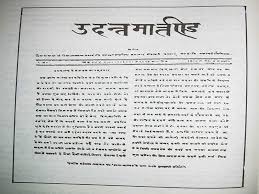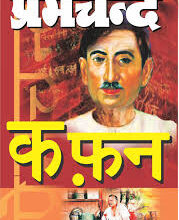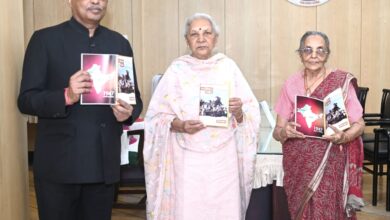The Future of Hindi Print Media In Abroad:-Sarvesh Tiwari

Forty-six years ahead of India’s Independence in 1947, Mahatma Gandhi camped in Mauritius for 18 days and initiated the first ever movement in the island nation to ensure civil rights for migrant Indian workers. To highlight the plight of the Indian workers, Gandhi (then 38) sent his friend Manilal Doctor to Mauritius to launch a newspaper, Hindusthani, probably the first ever Hindi newspaper printed outside India.
From 1907 to 1911, Manilal Doctor struggled for the rights of the Indians and brought a popular awakening through his concerted efforts. It is through his striving that he started the publication of a paper, the Hindusthani. At first it was published in English and Gujrati and later it was switched to English and Hindi.
As such, through the publication of the Hindusthani newspaper, Manilal Doctor had initiated the Hindi movement in Mauritius. Besides, he had brought a consciousness in the mind of the Indians in regard to their ancestral culture and a natural love for the Hindi Language.
Hence, the four-year long struggle of Manilal Doctor that brought a renaissance among the Indian community was a natural phenomenon. It is also through the initiatives of Manilal Doctor that the lingering local Arya Samaj got its boosting and it was consolidated and set on a solid footing. Born in 1900, Dr. Seewoosagur Ramgoolam was greatly influenced by Manilal Doctors socio-political activities and that of the socio-religious works of the Arya Samaj. Born to be a leader, he led the Indo-Mauritians as from 1935 onwards, and after an intense and long struggle liberated Mauritius in 1968, and served as Prime Minister until 1982, and Governor General until 1985.
Challenges:-
Besides, by publishing The Hindusthani daily, Manilal doctor had in a way challenged the then Francophone press represented by Annonces, Affiches et Avis Divers pour les Isles de France et de Bourbon of 1773 and Le Cernéen, the daily in French language published as from 1832. Both papers were published and both belonged to the French planters and French Colonizers, according to the historian, Auguste Toussaints Bibliography of Mauritius. Accordingly, the papers published in French and English on Mauritian soil between 1773 and 1954 totalled to 606. In the same list the number of Indian papers published during the same period were 23, in which 17 is the number of Hindi papers, Tamil 3, Gujarati 2 and Urdu 2.
Between 1832 and 1973 the general format of newspapers was four pages with mostly advertisements. In the local news, there were parliamentary meetings of the Government and of the sole Municipality of the island, Municipality of Port Louis. From this it can be understood that parliamentarians, mayors or politicians were head of the publishing houses. Today, Lexpress changes to 24 pages as compared to before it were only 4 pages and for Le Mauricien it is 48 pages as compared to earlier it was 16 pages. They are the daily papers one in the morning and the second in the afternoon. Nowadays we have Le Défi Quotidien which is a daily paper also. There are also a number of weekly papers in Mauritius such as, 5 Plus Dimanche, Bollywood Massala, LExpress Dimanche, Le Dimanche/LHebdo, Le DéFI Plus, Le Matinal, Samedi Plus, Week End , Star and Sunday Times.
The oldest newspaper published in Africa was in Mauritius- Le Cerneen, which was a French language organ of the sugar industry. The second oldest daily in Mauritius, also in French, was first published in 1908 to represent the interests of the Creole community.
The growing numbers of immigrant Chinese and Indian laborers and their descendants produced the first Chinese paper, Chinese Daily News, in 1932, and the first Indian daily, Advance, in 1939. Improved literacy and the people’s growing interest in politics led to more dailies: China Times (1953), New Chinese Commercial Paper (1956), Star (1963), L’ExpressLe Militant (1969), Liberation (1971), The Nation (1971) and Le Populaire (1973).
As of 2002, there were a dozen privately-owned newspapers published in Mauritius and one on nearby Rodrigues Island. Most of them freely express their views in opposition to reigning government, and although sometimes they seemingly overstep their limits, the government has yet to invoke the libel laws available to it. With the exception of the Chinese dailies, all daily newspapers are published in both French and English. Additionally, the Mauritius News, a bilingual newspaper that is published monthly in London, England, has a wide circulation in Mauritius as well as in the Mauritian community in the United Kingdom. The newspapers extensively use two wire services, the All Africa Newswire available in English and French, and the Pan African News Agency, which provides its news stream in English, French, and Arabic.
When Hindusthani rolled out from the press in early 1900 in Port Louis, French newspapers were dominating the media in Mauritius. But gradually, over a dozen Hindi newspapers were in print within a few years of Hindusthanis arrival.
The inspiration drawn from Hindusthani ignited the migrant workers. The paper and its content united the Indian migrants who mustered courage to participate in the freedom movement.
Conclusion:-
Even today, after years of its Independence, Gandhis principles and Indian culture have had so much impact on the Indo-Mauritian mindset that the island country reflects the Indian spirit in all walks of life, but in the country where the 11th World Hindi Conference is being held from August 18 to 20, 2018, neither a Hindi daily, nor a Hindi weekly paper is being published at present. The entire press of Mauritius is occupied by half a dozen of French dailies and French weeklies. Todays Hindi Journalism in Mauritius is reposing exclusively on Aryodaye, Vasant, Pankaj, Indradhanush, Rimjim, Akrosh, and Vishwa Hindi Patrika.
A survey of the vast panorama of Hindi journalism covering a period of more than a century (1909- 2018) shows the continuous presence of some fifty Hindi newspapers and periodicals. It also asserts that from the outset a few Hindi writers have been quite active and restless to enhance Hindi journalism in Mauritius. Hence a few names deserve to be mentioned, such as Manilal Doctor, Pt. Ramawadh Sharma, Pt. Cashinath Kistoe, Pt. Atmaram Vishwanath, Pt. Nursing Dass, Pt. Sundar Sharma, Suraj Parsad Mungur Bhagat, Jaynarain Roy, Pt. Basdeo Bissoondoyal, Pt. Mohunlall Mohit, Somduth Bhuckory, Abhimanyu Unnuth among others.
After going through the files of Hindi newspapers and journals, many elements have come to light. First, not a single country outside India has published so many newspapers and periodicals in Hindi Language. Secondly, many Indo-Mauritian writers and journalists have been honoured in India for having contributed in the top newspapers and journals of India. Thirdly, the panorama of Arya Samajist papers has been quite larger than the Sanatanist papers. Fourthly, the contents of the newspapers in the twenties were limited to social and religious matters rather than political and literary.



